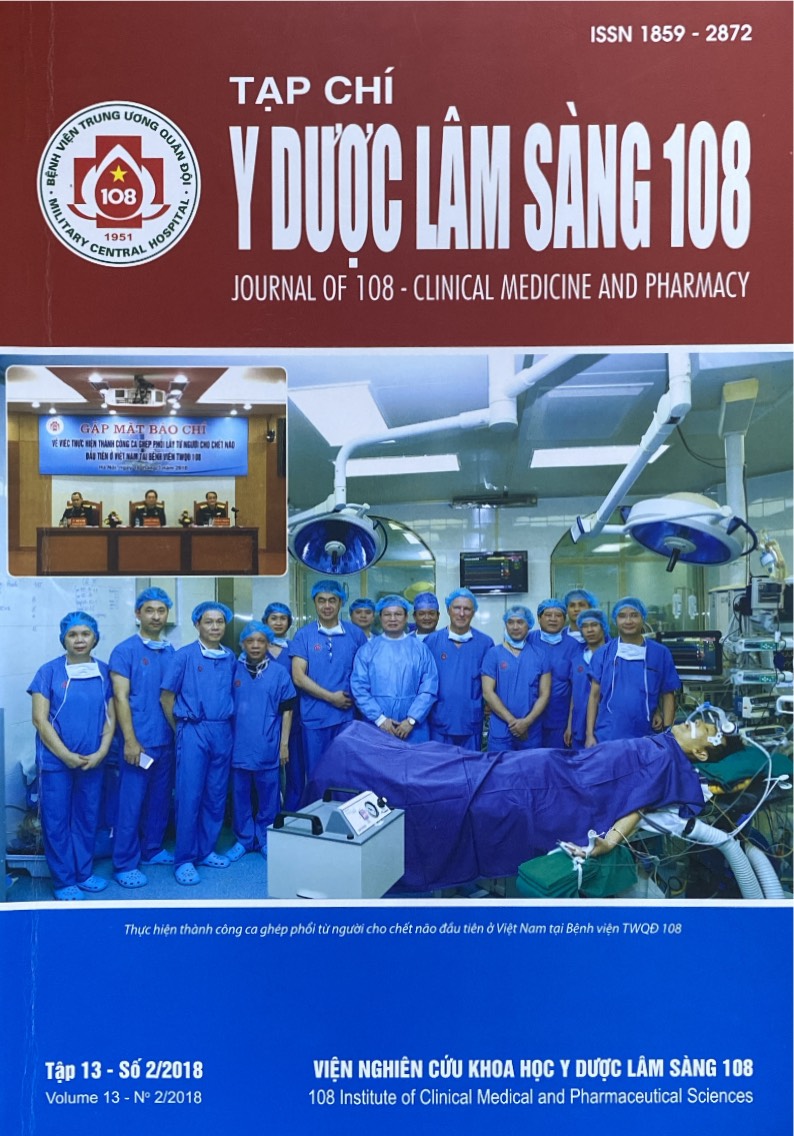Evaluating the analgesic effects of patient controlled epidural analgesia during the labor with some concentrations and doses of ropivacaine combined with fentanyl
Main Article Content
Keywords
Abstract
Objective: To evaluate the analgesic effects on labor of patient controlled epidural analgesia (PCEA) with ropivacaine at concentrations of 0.075%; 0.1% and 0.125% combined with fentanyl 2mcg/ml. Subject and method: A randomized clinical trial comparing 90 women who received PCEA, divided into three groups, using a ropivacaine concentration of 0.075%; 0.1% and 0.125% combined with fentanyl 2mcg/ml. Result: During the Ib stage of labor, three concentrations of ropivacaine showed adequate pain relief with > 90% of women with VAS < 4. During the second stage of labor, 26.7% patients in the ropivacaine 0.075% group did not have adequate pain relief with VAS > 4. Conclusion: Patient controlled epidural anesthesia - PCEA (initial bolus dose of 10ml, bolus dose per 5ml, 5 minutes interval) with ropivacaine at 0.125% in combination with fentanyl 2mcg/ml is suitable for pain management during labor.
Article Details
References
2. Trần Văn Quang, Bùi Ích Kim (2011) Đánh giá hiệu quả giảm đau trong chuyển dạ đẻ bằng gây tê ngoài màng cứng levobupivacain phối hợp với fentanyl ở các nồng độ và liều lượng khác nhau. Luận văn Thạc sỹ, Trường Đại học Y Hà Nội.
3. Boselli E et al (2003) Ropivacaine 0.15% plus sufentanil 0.5mcg/ml and ropivacaine 0.10% plus sufentanil 0.5mcg/ml are equivalent for patient-controlled epidural analgesia during labor. Anesth Analg 96(4): 1173-1177.
4. José M et al (2015) Effects of local anesthetic on the time between analgesic boluses and the duration of labor in patient-controlled epidural analgesia: Prospective study of two ultra-low dose regimens of ropivacaine and sufentanil. Acta Med Port 28(1): 70-76.
5. Patkar CS et al (2015) A comparison of continuous infusion and intermittent bolus administration of 0.1% ropivacaine with 0.0002% fentanyl for epidural labor analgesia. J Anaesthesiol Clin Pharmacol 31(2): 234-238
 ISSN: 1859 - 2872
ISSN: 1859 - 2872
